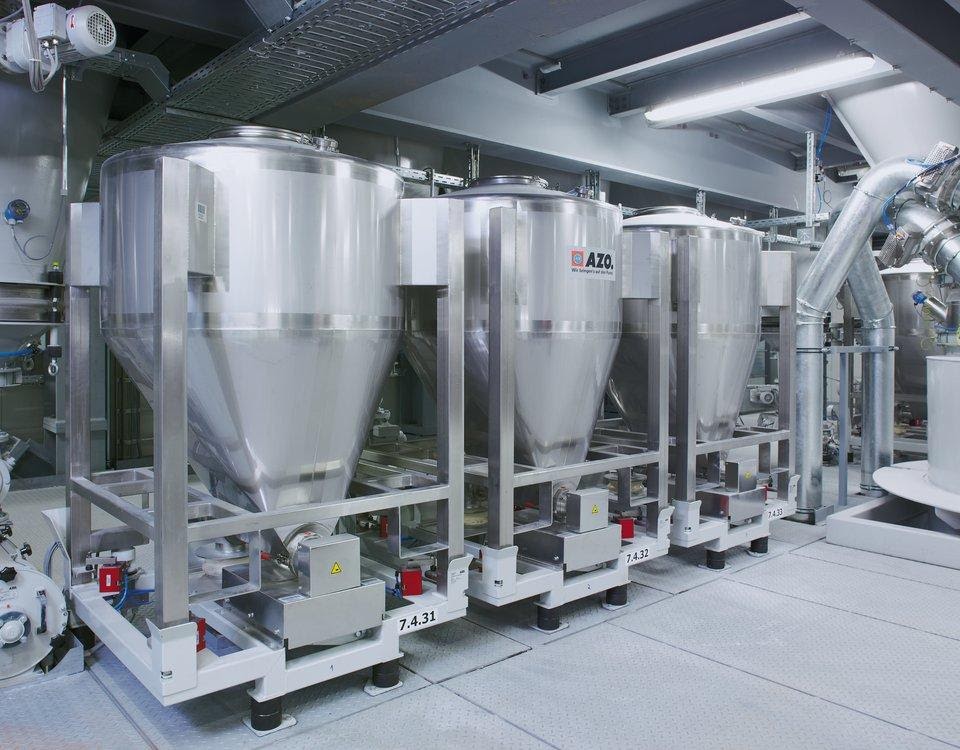
When it comes to automating micro and minor ingredients, rapid recipe changes can introduce benefits that can save incredible amounts of time and money. Implementing a handling system that is flexible enough for numerous ingredients using only a handful of receiver stations can open new doors for companies -- particularly those unable to invest in a large receiver station with one bin for each of many ingredients.
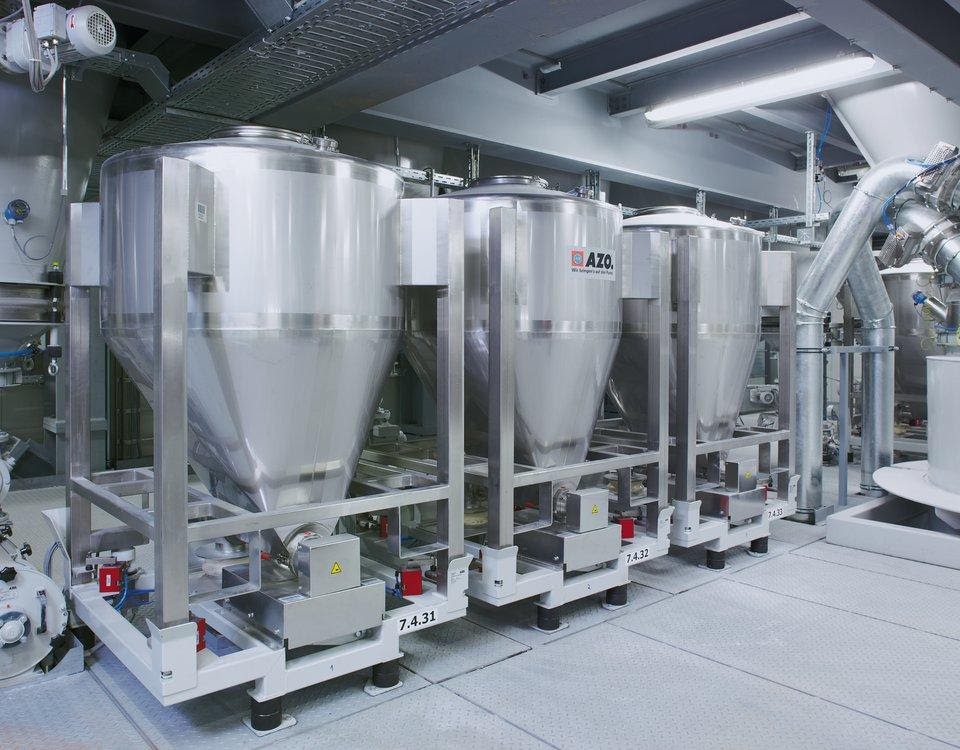
Imagine ingredient-specific IBCs (intermediate bulk containers) for your minor ingredients that you can swap out (to and from a warehouse) with minimal cleaning required. AZO calls such a system the DOSITAINER® (just one of the ingredient storage options you can implement to store material to be handled in a COMPONENTER® system).
We’ve blogged at length about how a COMPONENTER® allows the automation of ingredients that would otherwise require manual weighing and possible repetitive motion issues. In this post, we’ll share how the addition of an AZO DOSITAINER® can allow you to adapt to ever-changing recipes requiring new ingredients within a COMPONENTER® system. We’ll also explain how to bridge the gap to “whole system automation” in the manufacturing process.
An IBC with “plug-and-play” capability ensures flexibility
Sugar to starch, vitamin C to vitamin D, orange-flavored dyes to blueberry — these ingredients could each be stored in a unique storage and feeding bin. The bins could then be swapped in and out of the rack depending on the recipes required for each of the final products.
What’s the benefit here? Well, these special IBCs can be pulled out of the ingredient automation, moved to the warehouse and replaced with a different ingredient in the open slot in the system. This ingredient changeover can occur quickly and with minimal cleaning.
In any other automated minor ingredient system, an ingredient change would require operators to completely take the storage receiver apart and wash the entire interior of the hopper body. The screw feeder would also have to be taken apart and cleaned as well. This type of change over can take hours.
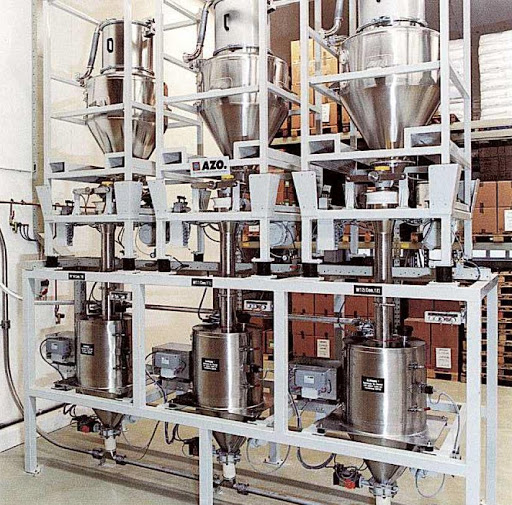
The feeding station for a pneumatically filled AZO DOSITAINER®
Another consideration is the excess product in the bin when you start the process. Unless you are lucky, you will have to empty it (and run the risk of spilling it) before you start the cleaning process.
With an IBC that has a “plug-and-play” feature, the only cleaning required of the operator is the excess product in the drop tube. It's a quick changeover with minimal cleaning; that’s the whole idea behind the DOSITAINER®. Its flexibility saves time and money by significantly reducing the time it takes to clean a system for an ingredient switchover. How does it specifically accomplish this? A critical piece of the equation is removed with the DOSITAINER® when it is switched out.
A DOSITAINER® is equipped with a dosing screw feeder
Other IBCs, including an AZO BATCHTAINER®, can be utilized with a COMPONENTER® system. A DOSITAINER® is unique from these because it has the additional advantage of a dosing screw feeder already included in the bin. Since the dosing screw is removed with the individual container, there’s no residual product left to clean out of a stationery screw feeder. Only the drop-tube will need to be cleaned before another IBC (with a new ingredient) is dropped in place.
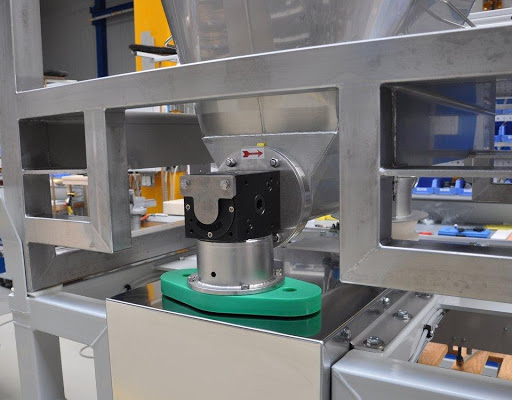
Where an integrated dosing screw is located on a DOSITAINER®
With a built-in metering screw, a DOSITAINER® offers one more way to increase efficiencies in an automated COMPONENTER® system. These systems help achieve “whole-system automation,” but even greater long-term benefits can be made by digging a little deeper into the world of ingredient automation.
Automated ingredient-feeder systems bridge the gap to full automation
Justifying an entirely new system (and not just IBCs) can be difficult, but is often worth the effort. At AZO, we know an investment in a whole new ingredient handling system is daunting, but there are many benefits. Automated conveying of all liquids, dry powders, minors and micro ingredients in a facility is what we refer to as “whole system automation.” A robust AZO COMPONENTER® is one piece of the puzzle, but to achieve even more savings and accuracies, products like a ManDos® can be incredibly helpful as well.
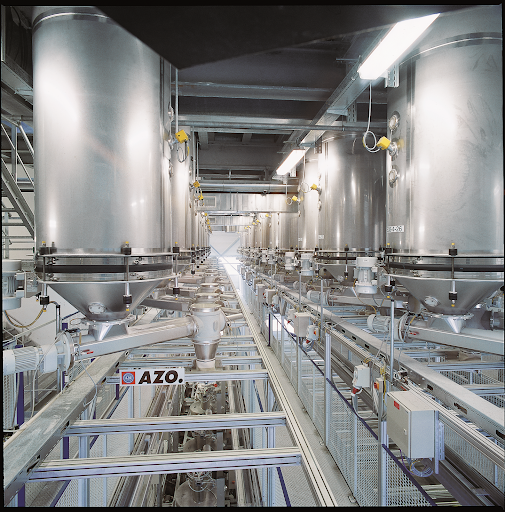
Typically, the first step in the journey of “whole-system automation” is automating bulk raw materials. It is true that the phrase “bulk raw materials” can mean different quantities to different product suppliers. To some, it is defined as raw materials carried in railcars or PD-trucks. Other suppliers refer to “bulk raw material handling” as 50-pound bags. The next lower level of “bulk material handling” is super sack unloading, followed by bag tipping stations (which many refer to as “semi-bulk material handling”). The lowest level of bulk material handling are micro ingredients, which is ideally handled by a COMPONENTER® -- truly bridging the gap to total automation.
If you’d like to hear more about these innovations and advancements in the material handling industry that AZO provides, feel free to contact our sales representatives. Our free COMPONENTER® e-guide also offers some useful information about the automation of micro and minor ingredients in a simple and easy-to-understand package. You can also sign up for and keep up with the AZO Big Bag Unloading blog to keep up with other ingredient handling topics we cover on a regular basis.


